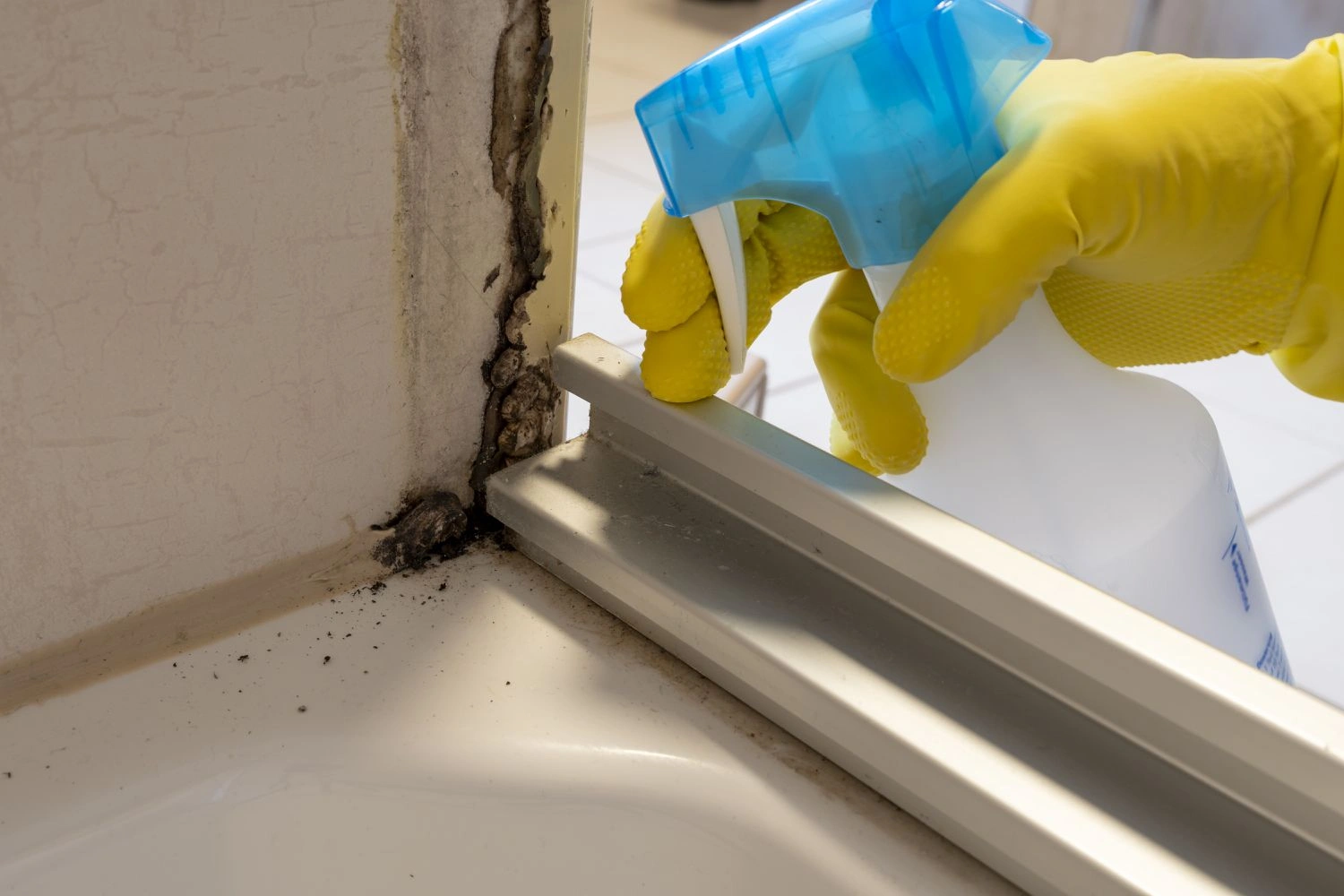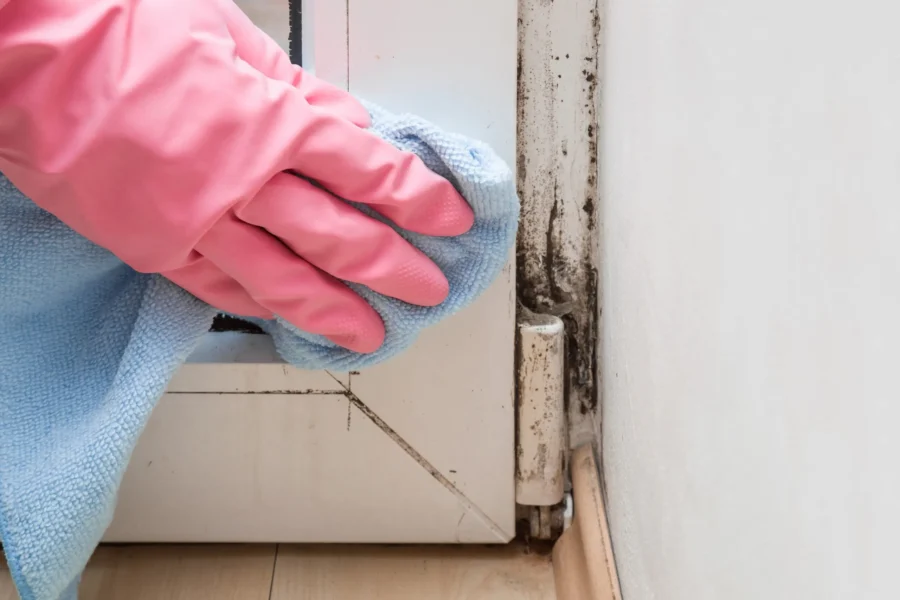Black mould around windows is a common and persistent issue in many homes. While it might seem like a minor nuisance at first, the presence of mould can have far-reaching effects on both the health of the inhabitants and the structural integrity of the property. This article provides comprehensive insights into what causes black mould around windows, How to Clean Mould From Windows, its potential health risks, and how to manage and prevent it. We will also address various methods for removing mold and share helpful tips on maintaining a mould-free environment at home.
Introduction
The sight of black mould creeping around window frames and sills can be both unsightly and alarming. Not only does it damage the aesthetic appeal of your home, but it can also lead to serious health concerns. Prolonged exposure to mould spores can cause respiratory issues, particularly in vulnerable individuals such as children, the elderly, and those with pre-existing conditions like asthma. Understanding the causes of black mould growth and how to manage it effectively is crucial for maintaining both the health of your home’s occupants and the longevity of your property.
Causes of Black Mould on Windows
Black mould forms when excessive moisture accumulates in specific areas of the home, and windows are prime targets for this growth. The most common causes of black mould around windows include:
- Leaking Window Frames: When window seals become damaged or worn out, water can seep in, creating a moist environment perfect for mould growth.
- Poor Roof Repairs: Any issues with the roof, such as leaks or improper sealing, can result in water seeping around the window frames, leading to dampness and subsequent mould.
- Inadequate Heating or Insulation: Poor heating systems or homes with inadequate insulation often experience condensation, especially during colder months. This condensation can accumulate around windows, fostering mould growth.
- Leaking Pipes and Fixtures: Plumbing leaks, particularly around sinks or bathtubs near windows, can also contribute to the build-up of moisture.
- Rising Damp: This occurs when moisture from the ground rises up through the walls and window frames, which can cause mould to form.
- Condensation: A primary cause of mould growth around windows is condensation. When warm indoor air comes into contact with cold glass, it creates condensation, which provides the moisture that mould thrives on.
The rooms most susceptible to mould growth are typically those with high humidity, such as kitchens, bathrooms, and bedrooms. These areas tend to produce the most moisture, making them ideal environments for mould to thrive.
Health Risks Associated with Black Mould
The dangers of black mould go far beyond its unsightly appearance. The scientific name for black mould is Stachybotrys chartarum, and it is known to produce spores that can significantly impact indoor air quality. These spores, which are microscopic and often invisible to the naked eye, can cause a range of health problems when inhaled, including:
- Respiratory Issues: Inhaling mould spores can irritate the lungs and airways, causing coughing, wheezing, and shortness of breath.
- Skin and Eye Irritation: Direct contact with mould spores can cause skin rashes, eye irritation, and other allergic reactions.
- Nervous System Effects: Exposure to mould over time can have adverse effects on the nervous system, causing headaches, dizziness, and fatigue.
- Exacerbation of Pre-existing Conditions: Individuals with asthma or other respiratory conditions are especially vulnerable to the harmful effects of mould spores.
Vulnerable populations such as babies, the elderly, and individuals with compromised immune systems are particularly at risk from mould exposure. As such, it is critical to take swift action to address mould growth around windows.
Managing and Preventing Condensation
Condensation is one of the primary contributors to mould growth on windows. When warm, moist air comes into contact with cold glass surfaces, it condenses and forms droplets of water. This water can then seep into window sills and frames, creating a damp environment that mould loves.
To reduce condensation and the risk of mould growth, consider the following strategies:
- Use Dehumidifiers: Dehumidifiers are an excellent tool for removing excess moisture from the air, especially in high-moisture rooms like bathrooms and kitchens. They can significantly reduce the humidity levels in the home, making it harder for mould to grow.
- Install Extractor Fans: Installing extractor fans in areas prone to excess moisture, such as bathrooms and kitchens, can help vent out humid air. These fans work quickly to remove moisture generated by activities like cooking or showering, preventing condensation build-up on windows.
- Increase Ventilation: Increasing the airflow in your home helps to keep moisture levels in check. Opening windows for a few minutes each day can improve air circulation and prevent condensation from settling on surfaces like windows.
- Limit Houseplants: While houseplants are lovely additions to a home, they release moisture into the air. Consider reducing the number of plants in areas where mould growth is a concern.
- Upgrade Your Windows: If you live in an older home with single-glazed windows, condensation may be more problematic. Upgrading to modern double-glazed windows can significantly improve thermal efficiency and reduce the chances of condensation forming on window surfaces.
Cleaning Black Mould from Windows
If you’ve already noticed black mould around your windows, it’s important to take action as soon as possible. Mould spores are harmful to your health, so cleaning mould around windows should be done with proper care and the right cleaning solutions. Here’s how to go about it:
- Safety First: Before cleaning mould, wear protective clothing, including goggles, rubber gloves, and a mask. This will protect you from inhaling mould spores and coming into contact with harmful cleaning agents.
- Use the Right Cleaning Solutions: A mixture of warm water and soap is usually effective for cleaning mild mould growth. However, for more stubborn mould, you can use bleach (1 part bleach to 4 parts water) or white vinegar as a cleaning solution. While bleach is highly effective at killing mould, it can damage surfaces or discolor them, so use caution, especially on painted wood or uPVC frames.
- Cleaning Process: Use a clean cloth or sponge to wipe away the mould. Avoid rubbing the mould, as this can spread the spores to other areas. After wiping down the surface, dry it thoroughly with a dry cloth to remove any residual moisture.
- Dispose of Materials Properly: Dispose of cleaning cloths or sponges used to clean the mould immediately. These materials can carry mould spores and should not be reused or left in the home.
How Do You Get Rid of Mould on Windows?
To remove mould from your windows, follow the cleaning process described above. It’s essential to ensure the affected area is completely dry after cleaning. Keep in mind that if the mould infestation is large (greater than one square metre), it’s best to call a professional cleaning service.
Is Vinegar or Bleach Better for Killing Mould?
Both vinegar and bleach are effective at killing mould, but they serve different purposes. Vinegar is a natural, non-toxic option and can be used on a variety of surfaces, including fabrics and porous materials. It works well for mild to moderate mould growth. Bleach, on the other hand, is stronger and can tackle more stubborn mould but may cause discoloration and damage to certain materials like painted wood or plastic.
How to Clean Mould off Window Glass?
Cleaning mould off window glass is straightforward. Apply a mixture of warm water and mild detergent to a cloth, then wipe the glass surface. For persistent mould, vinegar or bleach solutions can be used, but always test in an inconspicuous area to ensure they don’t damage the surface.
Maintaining Wooden Windows
Wooden windows are more susceptible to mould than uPVC because wood retains moisture. Regular maintenance is key to preventing mould growth on wooden windows:
- Inspect windows annually for signs of damage, such as cracks or water penetration.
- Keep the frames and sills clean and dry to prevent mould from gaining a foothold.
- Apply wood preservatives and repaint the windows regularly to protect them from the elements.
How Do I Stop Mould Growing Around My Windows?
Preventing mould growth involves keeping your home dry and well-ventilated. Some strategies to prevent mould from growing around windows include:
- Use dehumidifiers and extractor fans in moisture-prone rooms.
- Insulate your windows to reduce condensation.
- Fix leaks and water ingress around window frames promptly.
Preventive Measures
To keep mould from forming around windows, it’s essential to create an environment that is unattractive to mould. Regular cleaning, reducing moisture, and ensuring good ventilation are all crucial steps. Additionally, applying mould-resistant paint and sealant can create a barrier that prevents mould from taking root.
Conclusion
Black mould around windows is a serious problem that can affect both your home’s aesthetics and the health of its occupants. By understanding the causes of mould growth and implementing preventive measures, you can maintain a healthy and mould-free home environment. Regular cleaning, proper ventilation, and moisture control are key to managing mould around windows.
If you’re struggling with mould in your home, don’t hesitate to contact us at ProClean. Our team of professionals is equipped to handle all your house cleaning service Richmond needs, including mould removal and prevention. Get in touch with ProClean today to ensure your home remains a safe and healthy place to live!
Please see our social media pages below:
Find out more articles that can help you below:
How to Clean Water Spots on Windows
[/fsn_text][/fsn_column][/fsn_row]



